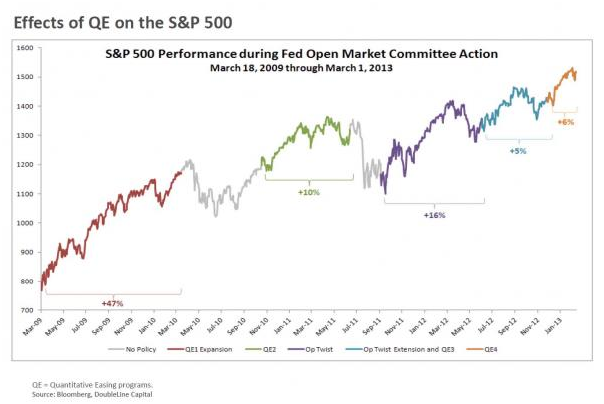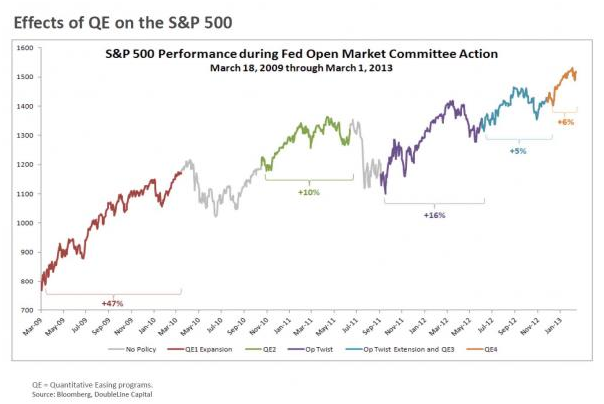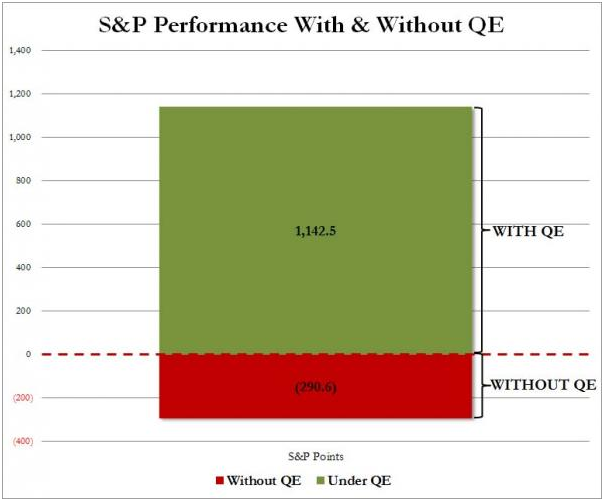Global View Investment Blog
Despite Recessionary Conditions, QE is Winning the Short-Term Battle
The media and Wall Street seem to celebrate recent economic data that five years ago would have been considered horrible. To quote David Rosenberg, former Chief Economist of Merrill Lynch, the global data “sucks.” Production in France is negative, worse than expectations, and deflation continues in Japan despite recent implicit efforts to create inflation.
Make no bones about it, the recent jobs report was not good. While the media has spun the latest report as a big positive surprise, the bottom line fact is that the average weekly hours worked FELL 0.4% for the first time since last October. In other words while there was a net increase in the number of jobs, this was entirely due to an increase in part time employment at the expense of quality full time jobs.
There is little doubt the world is in recession. According to the Organization for Economic Cooperation and Development (OECD) the combined GDP of 34 member states shrank 0.6% in Q4 2012. We have corroboration from ECRI that the developed world including the US, Europe and Japan, is most certainly in recession. Movement in the stock market is almost entirely due to coordinated QE efforts by the Central Banks of the US, ECB, and Japan. Jeffrey Gundlach of Doubleline recently asserted that the S&P 500 would easily be 500 points lower if QE had not been implemented and that “QE is in its 8th inning.” The two charts below show what has happened to stock prices with and without QE:
It is natural to second guess. Everyone wants last year’s return. However, in light of recessionary market conditions does it make sense to take unnecessary risk based on the belief that QE will go on forever and that it will continue to work?
More aggressive investors can prudently take risk in overlooked opportunities like Grandeur Peaks as well as sectors that have not fully participated in this bull market, particularly technology and energy.
For investors who will not need access to portfolios over the next 3-5 years and who wish to capture most of the potential upside in global markets, we also offer an Aggressive portfolio that we that will have more downside risk than our other strategies but less than key equity indexes. We believe this portfolio is suitable for investors who prefer to largely be fully invested and can tolerate substantial volatility. Please contact us if you would like to know more.

Written by Ken Moore
Ken’s focus is on investment strategy, research and analysis as well as financial planning strategy. Ken plays the lead role of our team identifying investments that fit the philosophy of the Global View approach. He is a strict adherent to Margin of Safety investment principles and has a strong belief in the power of business cycles. On a personal note, Ken was born in 1964 in Lexington Virginia, has been married since 1991. Immediately before locating to Greenville in 1997, Ken lived in New York City.
Are you on track for the future you want?
Schedule a free, no-strings-attached portfolio review today.
Talk With Us







